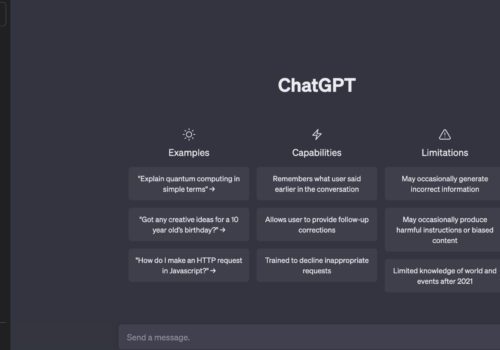Classroom learning is the traditional way of teaching and learning. It has been used for many years and is still a popular way to learn today. However, with the invention of the Internet, online learning has become a popular option for students all over the world. So, which is better: online learning or classroom learning? In this blog post, we will explore the pros and cons of both types of learning in order to help you decide which one is right for you.
Are you considering online learning as opposed to classroom learning? There are pros and cons to both. This blog post will help you decide which is best for you. First, let’s take a look at the pros of online learning.
Online learning can be more convenient because you can learn from home, on your own schedule. It can also be less expensive because there are no textbook costs and sometimes no course fees. And finally, online courses often have a more diverse student body than traditional classrooms do.
Now let’s look at the cons of online learning. One downside is that there is often less interaction between students and professors than in traditional classrooms.
Choosing the right way to learn can be tough. You want to choose a method that will help you learn in the most effective way possible. So, what is the difference between online learning and classroom learning? And which one is better for you? In this blog post, we’ll discuss the pros and cons of each type of learning so that you can make an informed decision about which type of education is best for you.

Image Credits : https://commons.wikimedia.org/wiki/File:ESL_online_learning.jpg
What is the difference between Online learning vs Classroom learning?
Classroom learning is the traditional form of education, where students are taught in a physical classroom setting by a teacher. Online learning, on the other hand, is a type of education where students learn through an online platform, such as a website or an online course.
There are several key differences between online learning and classroom learning. One of the most obvious differences is the location of the two types of learning. Classroom learning takes place in a physical classroom, while online learning can take place anywhere that there is an internet connection.
Another key difference is the pacing of the two types of learning. Classroom learning is often more structured, with set class times and deadlines for assignments. Online learning is usually more flexible, allowing students to learn at their own pace.
Another key difference is the amount of structure that is present in each setting. Classroom learning is typically more structured, with a set curriculum and timeline that students must follow. Online learning can be more flexible, allowing students to work at their own pace and complete assignments on their own schedule.
Finally, online learning and classroom learning also differ in terms of the interaction between students and teachers. In a classroom setting, students are often in close proximity to their teachers and can ask questions or get clarification on assignments easily. Online learning typically relies on written communication, such as email or discussion forums, which can make it more challenging to get immediate feedback from a teacher.
How does traditional classroom-based learning deliver knowledge?
There are a few key ways in which traditional classroom-based learning delivers knowledge: through lectures, discussions, and readings. These methods aim to engage students’ critical thinking and encourage them to draw their own conclusions from the material presented.
Lectures provide students with a broad overview of the course material, allowing them to gain a general understanding of the concepts being taught. Discussions give students a chance to discuss the material in more depth and ask questions about what they’ve learned. Readings provide students with a chance to explore the material in greater detail and learn more about the specifics of the topics being covered.
Traditional classroom-based learning has its advantages and disadvantages. One advantage is that it allows for a more controlled environment, where the teacher can ensure that all students are engaged and on task.
Another advantage is that this type of learning can be more easily tailored to the needs of individual students. A disadvantage of traditional classroom-based learning is that it can be less flexible than other types of learning, such as online or distance learning. Additionally, this type of learning can be more expensive than other types of learning, as it requires a physical space and materials.
What about online courses?
There are a number of online courses that can help you improve your writing skills. Many of these courses are free, and they can be taken at your own pace.
One great option for improving your writing is Coursera. This website offers a variety of courses from top universities like Stanford and Yale. You can browse through the course catalog and find a class that interests you.
Another option for online courses is Udemy. This website offers a wide variety of courses on different topics, including writing. You can filter the courses by price, rating, and difficulty level to find one that fits your needs.
If you’re looking for a more hands-on approach, you can also try a writing workshop. These workshops are typically led by experienced writers and provide a more intimate setting for learning.
Finally, don’t forget about resources like books and articles. There are many great books on writing available, and you can often find them at your local library. Articles can also be a great way to learn more about writing and get tips from experienced writers.
No matter which route you choose, remember that practice makes perfect. The more you write, the better you’ll become at it.
How is face-to-face learning structured for learners?
There are a few different ways that face-to-face learning can be structured for learners. One common way is through lectures, in which a teacher or instructor speaks to a group of students and imparts information on a particular topic.
This can be followed by discussion, in which students share their thoughts and ideas on the topic, and then break-out sessions, in which smaller groups of students work together to complete an activity related to the lecture. Other ways to structure face-to-face learning include workshops, in which students participate in hands-on activities led by an instructor, and seminars, in which students discuss a topic among themselves with the guidance of a teacher or facilitator.
No matter what the structure, face-to-face learning provides an opportunity for students to interact with each other and their instructors in a more personal way than online learning. This can make the learning experience more engaging and effective.
Online learning offers more options for students-
There are many reasons why online learning is becoming more popular among students. It offers more flexibility in terms of time and location, and it can be more affordable than traditional brick-and-mortar schools.
Online learning also offers more educational options for students. With so many different courses and programs available online, students can find the perfect fit for their interests and learning style. And with the advances in technology, online learning is only getting better and more accessible.
So if you’re thinking about pursuing an education online, know that you have plenty of options to choose from. There’s an online learning program out there that’s perfect for you.
Online learning offers clearly defined benefits-
There are many advantages of online learning, including the ability to learn at your own pace, choose your own schedule, and get personalized attention from instructors. Additionally, online learning can be more affordable than traditional classroom-based instruction, and it offers a wide variety of courses and programs to choose from.
When you take classes online, you can often set your own study schedule. This can be a great benefit if you have a busy work or family life. You can also rewind and review lectures or readings as often as you need to, so you never have to worry about falling behind in class.
Additionally, online learning can be more affordable than traditional classroom-based instruction. Many online programs offer scholarships and financial aid options to help students pay for their education.
Finally, online learning offers a wide variety of courses and programs to choose from. Whether you’re interested in taking classes on business, computer science, or another subject, you can likely find an online program that fits your needs.
Online learning vs classroom learning: which is superior?
There are many reasons why online learning is becoming more popular than classroom learning. Here are some of the advantages of online learning:
- Online learning is more flexible and convenient than classroom learning. You can study at your own pace and in your own time.
- Online learning is often more affordable than classroom learning, since there are no travel or accommodation costs.
- Online learning allows you to study from anywhere in the world, giving you access to a global community of learners.
- Online learning is more engaging and interactive than traditional classroom learning, thanks to features such as video conferencing, forums, and simulations.
- Online learning can be tailored to your individual learning style and needs.
- Online learning is often more enjoyable than classroom learning, as it gives you the freedom to study in your own way.
Global Adaptive Learning Software Market is Expected to Reach USD 7,434.3 Million by 2030|CAGR: 20.3%: Astute Analytica
The study undertaken by Astute Analytica foresees a tremendous growth in revenue of the market for global adaptive learning software market from US$ 1,382.1 Million in 2021 to US$ 7,434.3 Million by 2030. The market is anticipated to grow at a CAGR of 20.3% during the forecast period 2022-2030. Adaptive learning not only support the on-premise category of education, despite the online education portals are becoming the major cloud integrated platforms. Advancements in adaptive learning software have provided academic benefits such as better improved learning and innovation, higher student success, better knowledge sharing, creative thinking among students.
Cloud-based storage have minimized the requirement of physical storage, and universities and colleges have been able to expand their geographical presence, thus allowing students and learners to access the classroom training remotely. Moreover, increasing demand of distance-learning courses in adaptive learning software market is witnessing a rapid growth trend due to integration between education and technology.
Via Yahoo.com
Conclusion- Online Learning vs Classroom Learning
Although online learning has become more popular in recent years, classroom learning is still a preferred option for many students. There are pros and cons to both types of learning, and it ultimately comes down to the individual student’s needs and preferences.
We hope this article has helped you better understand the differences between online and classroom learning, as well as their respective advantages and disadvantages. Now that you have a little more information on each type of education, we encourage you to do some additional research to see which option would be best for you.





